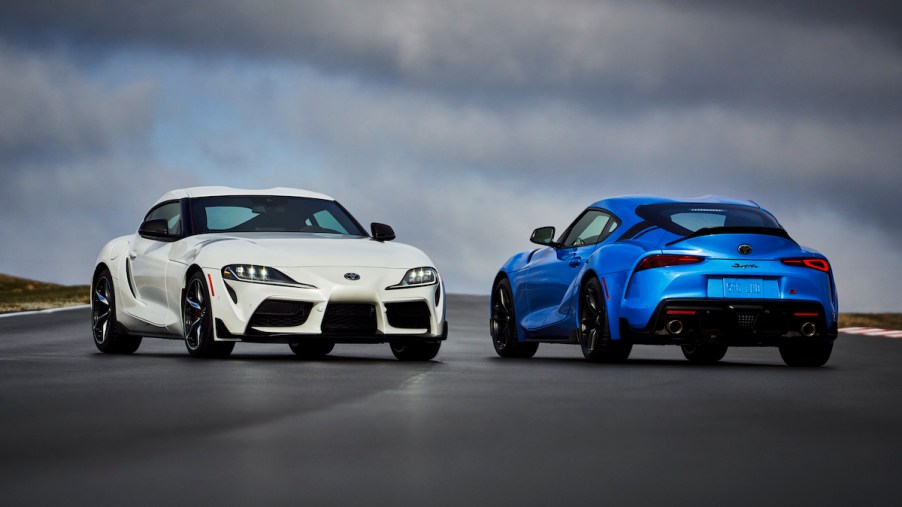
Why Are Manual Transmissions Dying and What Will Kill Them Off Completely?
Parents who dread the process of teaching a teen how to drive a car with a manual transmission should prepare to do their happy dance. Other than the 2021 Ford Bronco, select SUVs, and several sports cars, it appears that the manual transmission is dying. What reasons are behind manual transmissions dying out, and what will kill them off completely?
Automakers are trending away from manual transmissions
A Cars.com‘s survey demonstrates that automakers have been and are trending away from manual transmissions in their automobiles, which is an indicator that manual transmissions are dying out. Of 350 car models offered in 2020, only 50 are available with manual transmissions. Worse yet, MotorTrend lists only 17 models offering a manual transmission among the 2021 model year selections.
In 10 years, the percentage of new cars sold with manual transmissions declined from 3.4% in 2010 to just 1.4% by 2020. The highest peak of manual transmissions since automakers began producing cars with automatic transmissions was in 1980 when they were included in 34.6% of products.
The history behind manual transmissions
Except for GM’s Hydra-Matic (1938), Buick’s Dynaflow (1948), and several other unnamed versions, manual transmissions faced little competition from automatics during the first half of the 20th century. By 1970, the production of automatic transmission offerings had increased dramatically but continued to lag well behind manual transmissions due to their sluggish performance, lack of control, and sub-par reliability.
One of the main reasons manual transmissions continued to dominate the market had to deal with their broader range of gear choices. For about 30 years, the 1970s to 2000, manual transmissions offered from four to six gear choices while automatic transmissions were stuck, offering only three. Additionally, manual transmissions offered greater torque control for towing, hauling, acceleration, and greater control for climbing and descending.
Back in the day, manual transmissions were quicker, superior quality, and more reliable, though a bit less convenient. However, since the beginning of the 21st century, automatic transmissions began to reverse these trends, overtaking markets where manual transmissions were preferred (trucks and sports cars), and threatening to turn manual transmissions into relics only longed for by collectors.
What are the biggest threats to the survival of manual transmissions?
Better performance and a better selection of gear choices have made automatic transmissions more popular since 2000. Comfort and convenience are also among the major threats to the survival of manual transmissions. Essentially, automatic transmissions are now faster, of higher quality, and more reliable than manual transmissions. New automatic transmissions offer an average of six to eight gear choices with many powertrains offering nine and ten-speed options.
Comfort and convenience have provided significant motivation for the transmission transition as well. After all, who wants to fool with a clutch and shift-knob, if you can sit back, relax, and enjoy the ride without sacrificing performance. As a bonus, parents no longer have to watch their lives pass before their eyes as their teen driver stalls a manual transmission car in the middle of a busy intersection.
Though all of these are factors leading to the ultimate demise of manual transmissions, manufacturing costs are likely to kill off manual transmissions completely. Less expensive, automatic transmissions contribute to lowering bottom line expenses, so few automakers have limited their manual transmission offerings for two decades.
The days of manual transmissions are numbered
The outlook is dismal for manual transmissions. Though they have been an integral part of automotive history, automatic transmissions now reign supreme, and we can only look on with a nostalgic tear (or not) as we watch manual transmissions dying out forever.


